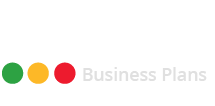What is the conversion rate in your business plan
An app is worth a thousand words or a few million dollars in a better case
The last few months have felt as if the dot com bubble which occurred in 1999 is returning with full force
Everyone today wants to be a millionaire and it seems like more and more entrepreneurs are achieving their dream. We read in the financial papers almost daily now, how this young bright mind is going to be netting a few dozen million dollars by making an exit of his cyber-security startup. However, one should also keep in mind that high growth startups and entrepreneurships have a very slim chance of surviving
According to research held by Berkley & Stanford faculty members in 2011, more than 90% of high-tech companies fail. Of those which fail, 74% fail because of premature scaling. Premature scaling happens when a company shows inconsistency in some of its business aspects, meaning for example, it invests heavily or unnecessarily before seeing any customers or revenue
Another example of premature scaling would be a company which releases a bugged or non-working product. Furthermore, the researchers also found that a solo founder takes longer to reach the scale stage and that balanced teams of founders (where one is technically-driven, and the other business-driven) tend to raise 30% more money, have 2.9x user growth and are less likely to scale prematurely than one-sided teams (where both founders are either technically-driven or business-driven)
This is to say that if you’re looking for a co-founder for your startup it is best that you not have the same background A good example of preparing for a real view of the company’s potential future is writing a business plan Our customers in the high-tech sector which require our assistance in writing business plans to potential investors (or even for internal needs, as objective and realistic financial projections) have to have basic knowledge of revenue-creating channels across the web
It seems that the most prevalent way nowadays is to either advertise via Google dwords or through Facebook Ads. When promoting your company’s web page, official Facebook page, or even a simple landing web page for an app/service or product you are offering, you need to keep in mind who are your potential clients and by what strategy you wish to advertise (but also make sure you have a great SEO team enhancing your site’s mobile visibility and compatibility with Google’s algorithms)
There are several advertising abbreviations and terms that every newbie in the online media must and should know
Unique Visitors (or simply Uniques) – A visitor who has never visited your site before. Each visitor is counted once, regardless of how many visits he makes (hence, Unique)
CPC (cost-per-click) – A financial number which suggests how much it costs in average to put an ad for one click by a visitor (this number can range between 0.01$ and a few dozen dollars, depends on what you’re promoting and your market audience). In general the average CPC rates have been diminishing since 2011. During the previous quarter, Average CPC rates have fallen by another 6% for an 11th consecutive time. Average CPC is comprised of various segments such as Mobile and Desktop or Geographical location (CPC in mature markets is rising, while in developing markets it’s falling) so the number itself (which is close to $1) is not that significant. The fact that there is an ongoing trend in the CPC rates should be recognized and familiar by aspiring promoters
CPM (cost-per-mille) – A financial number which suggests how much it costs to have 1,000 “eyeballs” (views) to your ad. Normally you would use this term when you try to get your ads to as many people as possible (to enhance brand awareness and not necessarily to get more clicks)
CTR (click-through-rate) – to know this statistics you divide the amount of people who clicked on your ad by the total amount of people who viewed it. You can use this statistic to learn about the effectiveness of your ad and the relevance and efficiency of it to your market audience
Conversion Rate – when you divide the amount of people that interacted with your site (customers, people who signed up for your service or purchased a product) by the amount of people who clicked – the conversion rate for your ads emerges. A good conversion rate is considered somewhere between the range of 1%-4%, but it really depends on the product you’re selling (if you’re promoting luxury apartments in Manhattan, you’re probably going to get a much lower conversion rate, and it goes the other way around). This number can only be viewed once you start your marketing campaign, so along with CTR you can gauge the quality of your ads using these rates. Even though you will usually end up just paying some professional to promote your site, you should always become familiar with these terms as they can become critical to your marketing campaign success or failure



Leave a Reply
Want to join the discussion?Feel free to contribute!